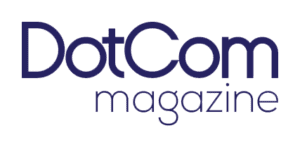As the healthcare landscape evolves, the importance of AI in the mobile health diagnostics sector cannot be overstated. Understanding AI in the mobile health diagnostics is now essential for patients, healthcare providers, and technology innovators alike, as it significantly reshapes the way diagnoses are conducted and delivered. In fact, AI in the mobile health diagnostics is revolutionizing early detection, accuracy, and patient engagement at a scale previously unimaginable. With the integration of real-time data collection, machine learning, and intelligent insights delivered via smartphones and wearable technology, AI is creating a healthcare paradigm that is more efficient, accessible, and predictive than ever before.
1. AI-Powered Early Disease Detection on the Go
One of the most impactful innovations in mobile health diagnostics is the use of AI for early disease detection. Smartphones equipped with AI algorithms and sensors can now detect signs of conditions such as diabetes, skin cancer, or respiratory illnesses well before traditional symptoms become obvious. For instance, apps using smartphone cameras can analyze skin lesions for melanoma or track voice patterns for signs of neurological decline.
This capability empowers users to act quickly, increasing the chances of successful interventions. AI’s ability to process thousands of datasets from diverse populations also reduces diagnostic bias, ensuring more equitable healthcare delivery across demographics.
2. Seamless Integration with Wearables and IoT Devices
AI thrives on data, and mobile health diagnostics leverage data from smartwatches, fitness trackers, glucose monitors, ECG patches, and other wearable devices. These gadgets collect continuous biometric data—heart rate, oxygen saturation, temperature, sleep patterns—and relay it in real time to AI-driven diagnostic platforms.
For example, an AI system can analyze weeks of heart rate variability and detect arrhythmias before symptoms occur. AI can also alert users or doctors when parameters fall outside the healthy range, offering an unprecedented level of proactive care.
3. Real-Time Symptom Analysis and Virtual Triage
Patients no longer have to wait for appointments to get a health opinion. AI chatbots and diagnostic apps can assess symptoms based on user input—like cough duration, pain severity, or fatigue—and provide instant triage recommendations. These tools can suggest whether someone should seek emergency care, schedule a consultation, or manage their symptoms at home.
Virtual triage powered by AI reduces unnecessary ER visits, saves time, and lowers healthcare costs, especially in underserved areas. This democratization of health access is a game-changer in both urban and rural settings.
4. Machine Learning Enhances Diagnostic Accuracy
Unlike static medical guidelines, AI systems continuously learn from each new data point. Machine learning models in mobile diagnostics constantly improve their accuracy by comparing new cases against millions of past cases stored in the cloud. These models identify subtle patterns in symptoms, images, or signals that human doctors might miss.
For instance, in radiology, AI can detect microcalcifications in mammograms via mobile imaging tools or flag anomalies in lung X-rays using portable scanners. The continuous evolution of these models means diagnostic tools are always improving.
5. Personalized Health Recommendations and Predictive Alerts
Beyond diagnosis, AI provides personalized health recommendations based on the user’s behavior, medical history, and genetic profile. A mobile app can analyze your food intake, exercise, sleep, and stress levels to recommend lifestyle changes, supplements, or preventive screenings.
Predictive AI can also issue alerts—such as warning a diabetic user of potential hypoglycemia based on previous readings and current trends. This personalization makes health management more meaningful and actionable.
6. Empowering Remote and Underserved Populations
Mobile diagnostics powered by AI bridge the healthcare divide. In regions with limited access to doctors or diagnostic labs, mobile phones become diagnostic hubs. AI-powered apps can detect eye diseases using a smartphone camera, analyze urine samples with test strip photos, or identify respiratory diseases using audio recordings of coughs.
By decentralizing diagnostics, AI enhances healthcare accessibility, allowing millions to benefit from expert-level assessments without stepping into a clinic.
7. Natural Language Processing (NLP) for Clinical Reporting
AI-driven NLP tools are being embedded in mobile diagnostic platforms to transcribe and interpret spoken symptoms, patient history, and diagnostic outcomes. Users can describe their condition verbally, and AI will translate the input into clinical data that healthcare providers can use.
This speeds up documentation, reduces errors, and increases engagement, especially for individuals who struggle with typing or literacy.
8. Data Privacy and Security Powered by AI
Given the sensitivity of health data, mobile diagnostics must prioritize privacy. AI plays a pivotal role in ensuring data protection. Algorithms can anonymize datasets, detect security breaches, and manage encrypted storage and transmission.
Moreover, AI enables differential privacy techniques, where models learn from data without ever exposing individual identities, ensuring both utility and confidentiality.
9. Faster Public Health Response Through AI Diagnostics
During public health crises like COVID-19, AI-based mobile diagnostics help track disease spread in real-time. People can report symptoms, get diagnostic suggestions, and upload health data anonymously. AI aggregates this information to detect outbreaks, forecast trends, and alert authorities.
This agile, data-driven response supports faster containment, more efficient resource distribution, and informed public health policies.
10. The Future: Conversational AI and Continuous Diagnostics
The next frontier of AI in mobile health diagnostics involves seamless, continuous diagnostics that feel as natural as speaking to a friend. Imagine a future where a conversational AI checks in with you every morning: analyzing your voice, scanning your face for signs of stress, interpreting biometric data, and offering tailored wellness tips.
Such ambient intelligence will transform mobile devices into proactive health guardians—always monitoring, always learning, and always adapting.
Conclusion
AI in the mobile health diagnostics sector is not just a technical evolution—it’s a fundamental reinvention of how we interact with healthcare. From early disease detection and predictive analytics to global health access and real-time triage, artificial intelligence is placing diagnostic power directly into our hands.
By understanding the essential ways AI is reshaping this field, stakeholders—including patients, clinicians, and developers—can harness its potential to reduce healthcare costs, improve outcomes, and make personalized, real-time care a universal reality. As the field matures, collaboration, ethical data practices, and ongoing innovation will ensure that AI in mobile diagnostics fulfills its promise to revolutionize modern healthcare.





























